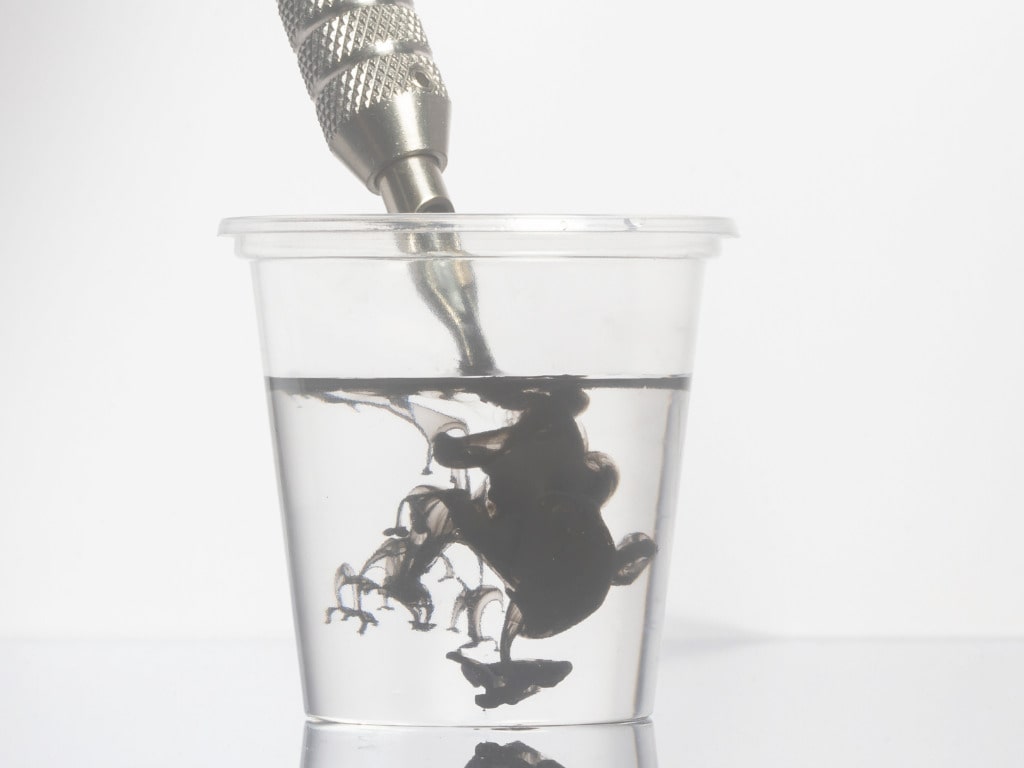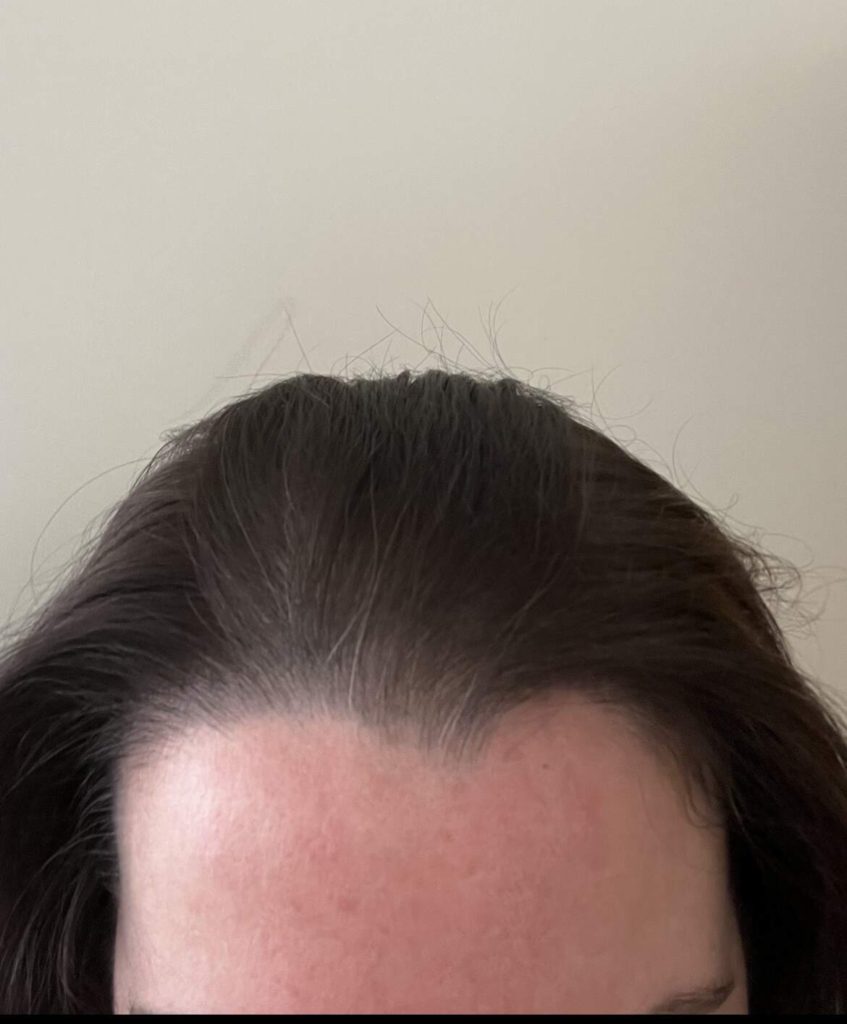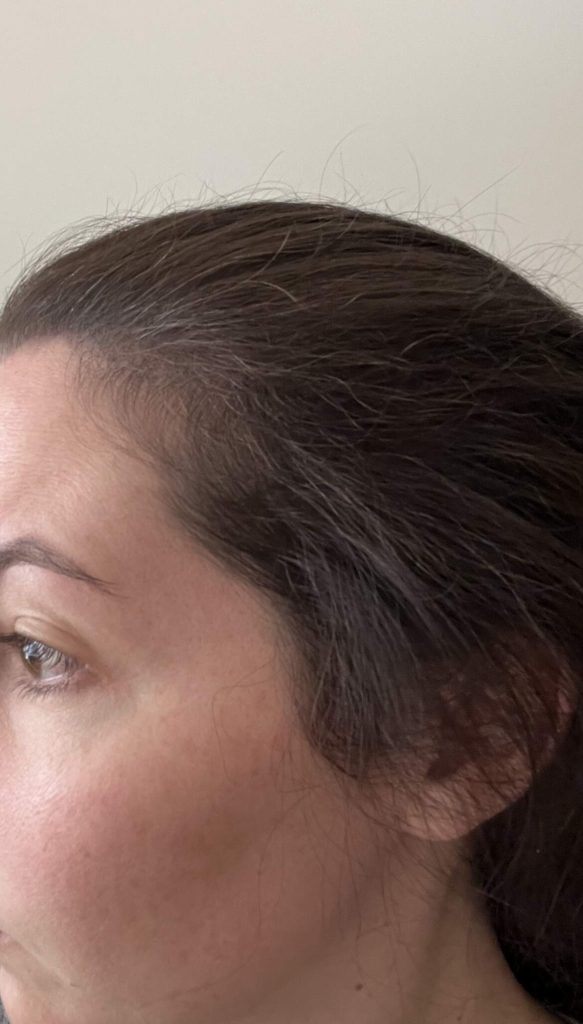This post may contain affiliate links, which means I'll receive a commission if you purchase through my link, at no extra cost to you. Please read full disclosure here.

1. What is scalp micropigmentation (SMP)?
I used scalp micropigmentation (SMP) as an effective way to conceal my hair loss from androgenic alopecia.
In this post I give some background on the procedure, my experience with SMP, and then highlight 5 things for you to consider before deciding whether SMP may be right for you.
You may have heard this procedure referred to as: hair or scalp tattoo, scalp pigmentation, scalp micropigmentation (SMP), etc. (I will call it SMP for the remainder of this post).
SMP is a procedure where tiny dots of pigment (less than 1mm in size) are placed on the scalp by using needles, to create the illusion of tiny hair follicles (1). The procedure can be performed without using local anesthesia, and depending on your needs may take one to three visits (spaced apart by a few weeks) followed by potential future touch up sessions.
Each session I had (with a licensed and trained professional) took about 3-5 hours (times will vary). But despite taking up a decent chunk of my day, I want to point out that if done well, SMP can look just like your own hair follicles and can be matched to your own hair color.
The pigment can also be placed in different patterns and designs. For example: It can help thin hair look thicker, and blend into the rest of your hair. It can also help restore a receding hairline. Hallelujah! It can also be used to camouflage scarring.
2. So, wait....Is it a tattoo?
Not exactly… Some of the differences between SMP and tattoos are: the technique used, the tools used, and the depth that the ink is deposited to the scalp (2).

Before Scalp Micropigmentation
3. Why I wanted to get SMP...
My thought process...Within the last two years my hair began thinning pretty significantly at my hairline. Thank you, androgenic alopecia. Love it. Super stoked about this.
But anyways… My scalp is basically ghost-white. (Think, Casper). Now contrast my pale scalp with my my dark brown hair. Do I need to explain any further? So…I find myself always using some sort of a concealer. Usually, it's a combination of the following depending on my activity that day; root touch up spray, thickening fibers, or a fill-in shadow...You can read more about the products and concealing tips and tricks I use HERE.
But these methods are temporary. And even though I always blast my scalp with hairspray to make sure things are staying in place and looking fly… I notice I'm always still kind of anxious about it. Are these fibers still along my hairline? Or are they partying on my forehead? So, for me… scalp micropigmentation offered a permanent method of concealing. Goodbye egg-shell white scalp! Bon voyage!

7 days after first session of scalp micropigmentation (SMP).
4. What might be some factors that influence the look of SMP?
The angle of the needle against the scalp
How deep the needle goes into the scalp
Length of time the needle is in contact with the scalp (Ex: this may impact the amount of ink that gets deposited)
Resistance of the scalp (Ex: The elasticity of your skin may impact the outcome)
How fluid the dye is
Level of expertise of the person performing the procedure
The color of pigment
Needle thickness
Pattern of dot placement
(Reference found here for the above list (1))
5. Any safety concerns?
Some potential risks include infection and allergies that you may experience to the pigment (3).
6. But tell me more about how your hairline turned out....
As you know, this is the area that gave me the most anxiety. I was so scared that the dots would end up big and blotchy and I'd have a speckled looking hairline.
Usually a single-pronged needle is used for the hair-line, and a triple-pronged needle for the rest of the scalp (1).
Why?
The single-pronged needle is used to create finer dots which are placed in an irregular pattern.
Irregular pattern = Realistic
Hair doesn't grow in a perfectly straight line.
Think of what it would have looked like if my provider had done a continuous line with hard edges, or a grid pattern… Awkward.
The method she used by placing the dots irregularly gave me a natural look and gave my hairline a soft finish. I can't reinforce this enough…The skill level of your provider matters!
I went to Casey Kim for my SMP. You can check out her website HERE for more information. I highly recommend her if you're in Southern California. She is well known for her brow microblading but also offers other services such as SMP which she is phenomenal at.



These images were taken one year after two SMP sessions. You can click on them to take a better look.
7. Let's talk about the pain...
Did it hurt? No. I would say it felt more like a vibrating massage? I think the hairline may have been a little sensitive but I didn’t need any breaks during the procedure due to pain. There were no topical numbing agents involved. I have had platelet rich plasma (PRP) injections on my scalp with no numbing agents and can get through that by taking breaks if the pain is bad. This was absolutely nothing like the PRP injections. I did experience some redness on my scalp which went away in a day or two. My scalp did not scab at all and I did not notice any blood.
8. Can anyone tell you've had it done?
I had the procedure performed almost a year ago and I think I've only had two hair stylists ever say something. I don't really trip out about that. I personally don't think anyone can tell. No friends have ever brought it up to me. I've noticed that because I have adrogenic alopecia I'm hyper aware of my scalp but other people just aren't. For the most part people are living their own lives and not paying attention to what's going on with my scalp. Lol.
9. Am I happy with the outcome?
Overall I'm glad I did it, especially around my hairline. SMP hasn't eliminated my use of fibers, root concealing sprays, or shadows. Initially I went in with this idea that I would be free of all those products. I was wrong. But it has made me feel a little more confident and I will definitely get a touch up soon since I’m about a year out from my last procedure.
5 Things you may want to consider if you're thinking about SMP...
1. Have realistic expectations. About a week after my first procedure I remember looking in the mirror and thinking… Does anything even look different? Just paint my pale scalp black! I wanted more coverage and more fullness. But my provider had a talk with me and explained that, "Being able to see some scalp through the hair is…normal." Okay, fine.
2. Do you dye your hair different colors? If you like to switch it up (like going from dark hair to light hair etc.) then you may want to wait on getting this procedure done. You would want the SMP to match the color of your hair follicles and that may be difficult if you change your hair color often.
3. It takes a while. I finished a total of two sessions and have not returned for my third. My reasoning was just the time commitment. I would be in the chair anywhere from 3-5 hours. Time duration will vary based on the individual but expect these appointments to take a significant amount of time.
4. Expect to pay a good amount. Depending on your financial situation this may be a pretty pricey procedure. Call multiple providers and ask for quotes but remember that cheaper isn't always better. Read reviews. Ask around. Do your research so you can find a licensed and trained professional in SMP who has worked with women before. Ask to see photos of their work. Skill level matters!
I drove an hour and a half to get to my practitioner. I drove that distance because I was confident in her skill level. I had seen her portfolio and she had performed the procedure on women before.
5. Over time the pigment will slightly soften. I remember initially thinking, Wow! This is dark!
48 hrs later I showered and the excess pigment I had on the surface of my skin washed down the drain.
Then over the course of a few more weeks I noticed my color softened a little more.
Remember, UV can have an impact on fading as well. If you're out in the sun a bunch I would try to wear a hat. The fading may require touch up sessions (Ex: annually) in order to maintain the level of coverage you desire. The fading may also result in color changes (Ex: Black to Blue). I'd recommend asking your provider about what to expect in terms of color changes over time due to fading.
If you aren't ready for a procedure like this then check out my post on the tools I use to conceal my hair loss. You can find it linked HERE. I just want to reiterate that even after having two sessions of SMP, I still rely on these tools daily.
References:
1)Dhurat RS, Shanshanwal SJS, Dandale AL. Standardization of SMP Procedure and Its Impact On Outcome. J Cutan Aesthet Surg. 2017 Jul-Sep;10(3):145-149. doi: 10.4103/JCAS.JCAS_116_16. PMID: 29403185; PMCID: PMC5782438.
2) https://scalpmicrousa.com/scalp-micropigmentation-vs-scalp-tattoo-hair-tattoo-and-smp/
3) Saed S, Ibrahim O, Bergfeld WF. Hair camouflage: A comprehensive review. Int J Womens Dermatol. 2017 Feb 16;3(1 Suppl):S75-S80. doi: 10.1016/j.ijwd.2017.02.016. PMID: 28492045; PMCID: PMC5419059.